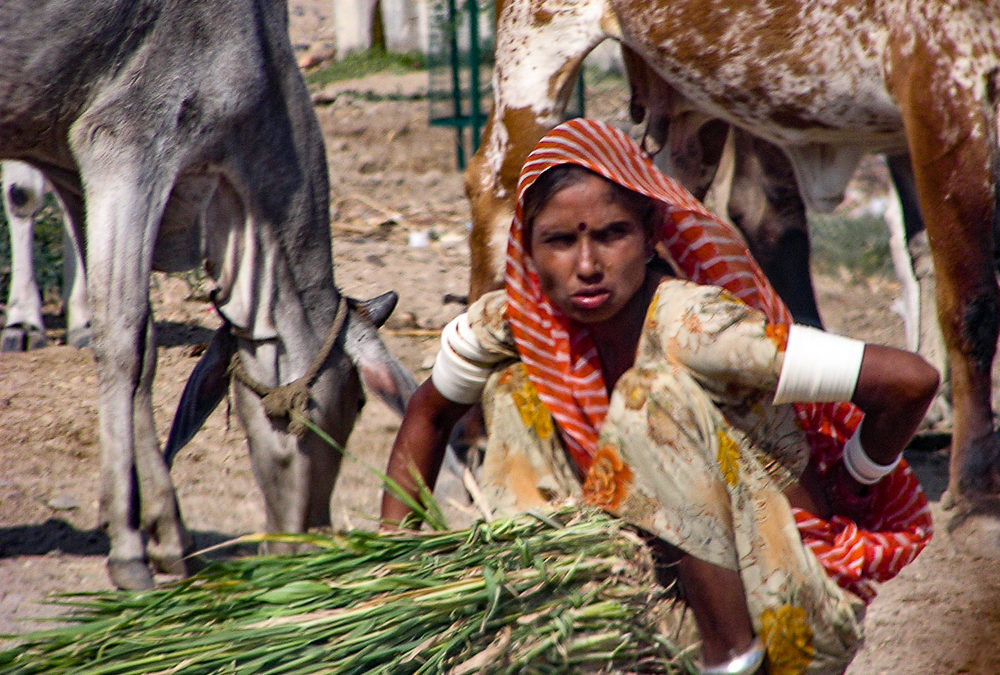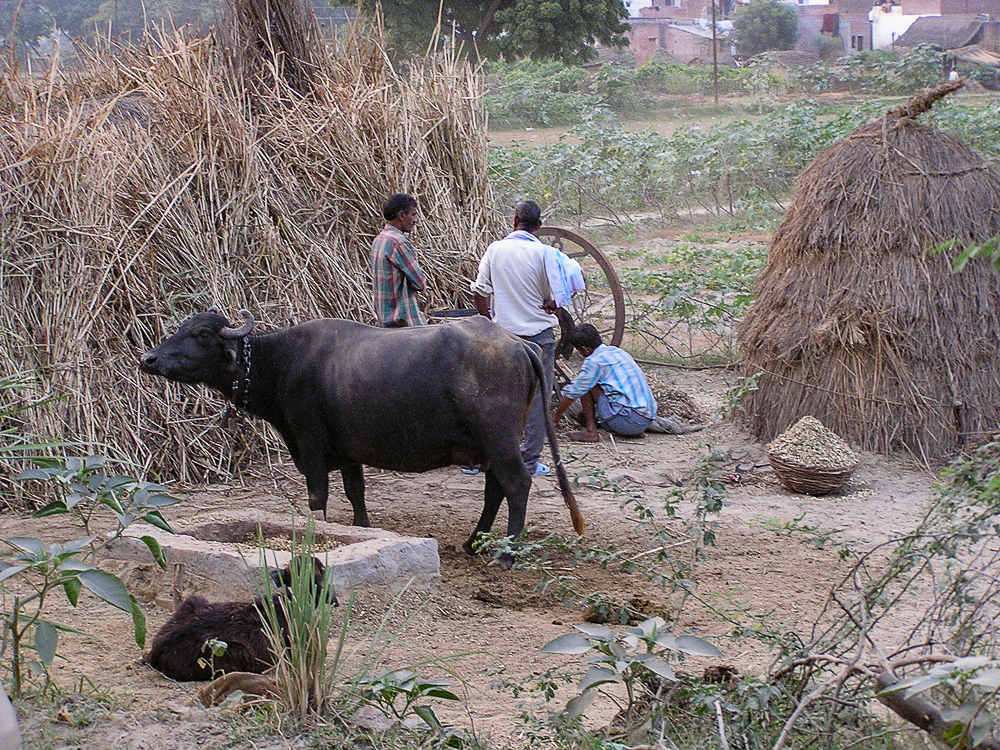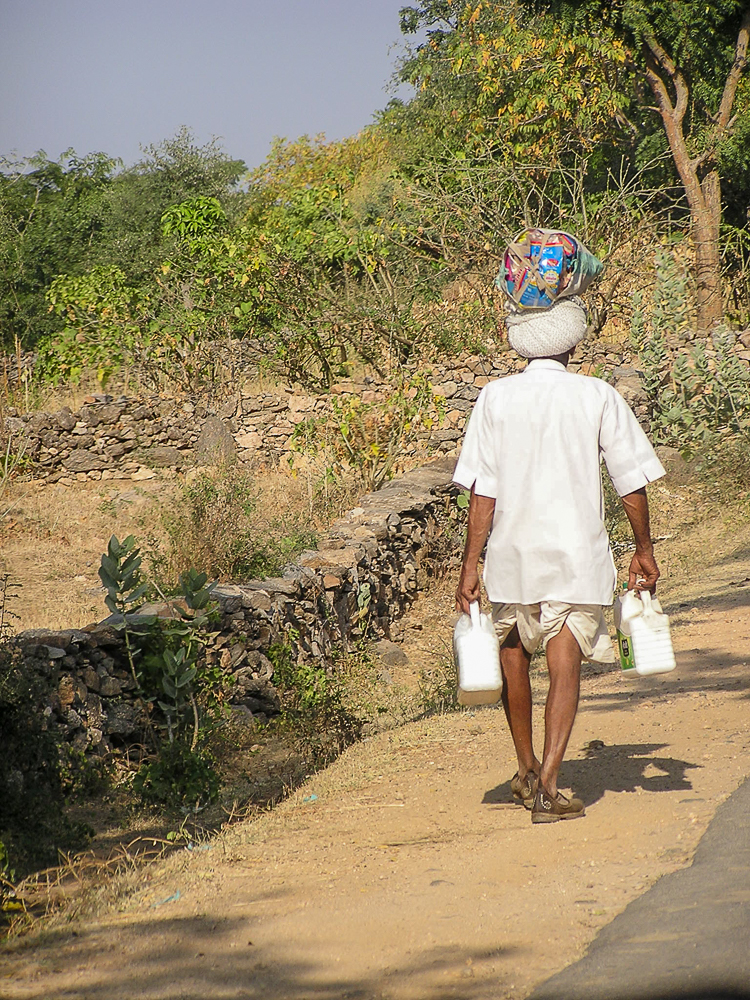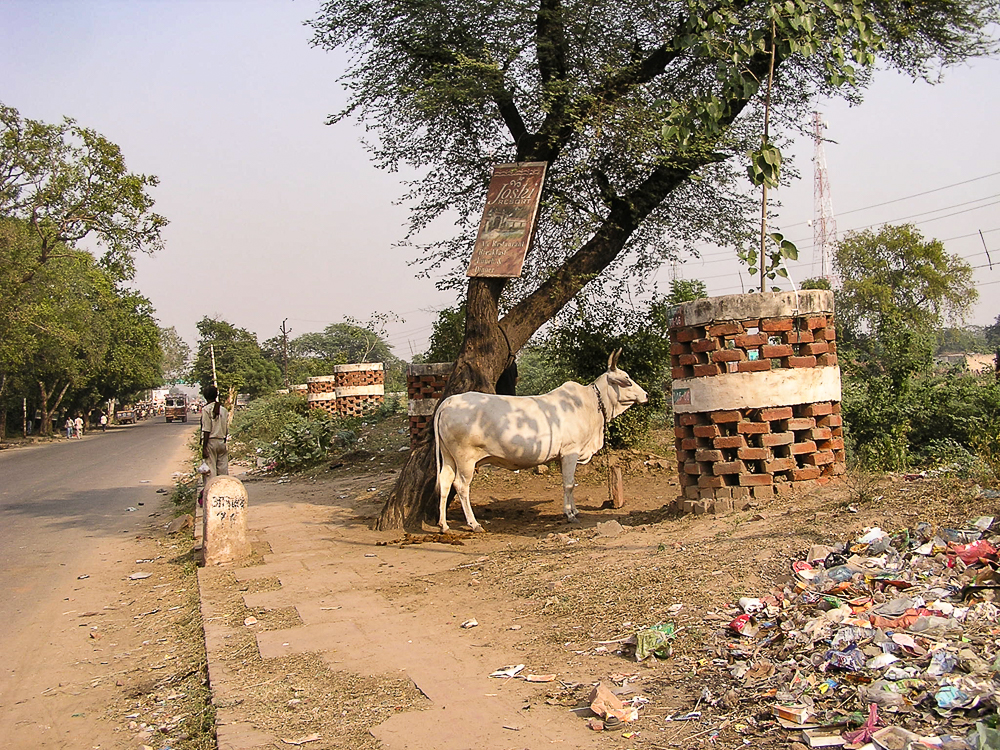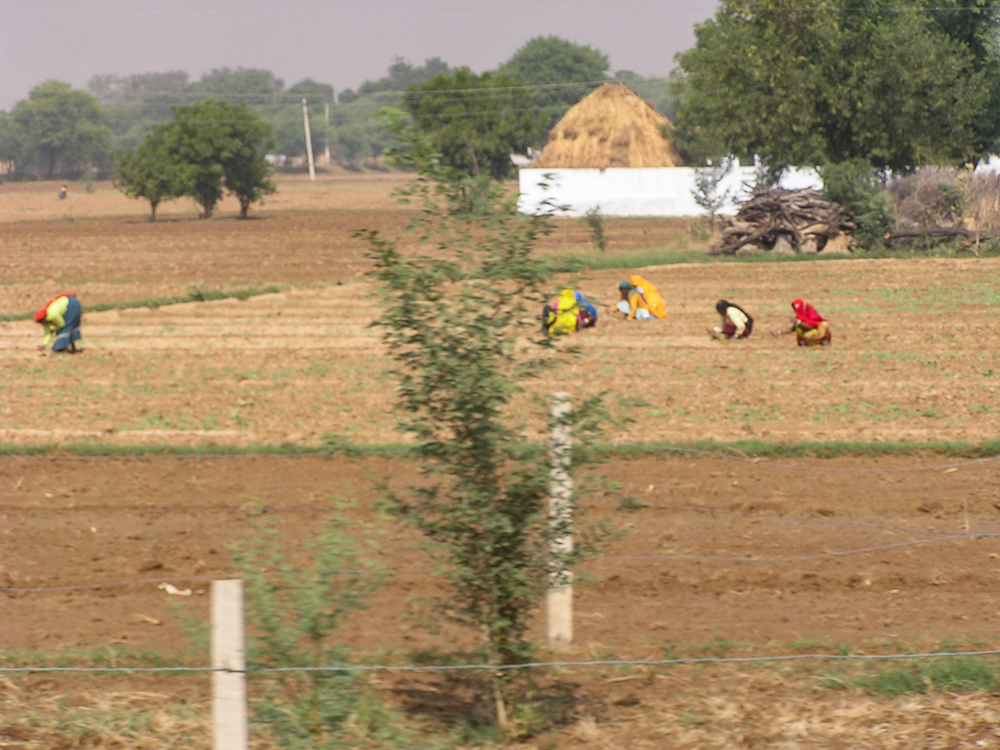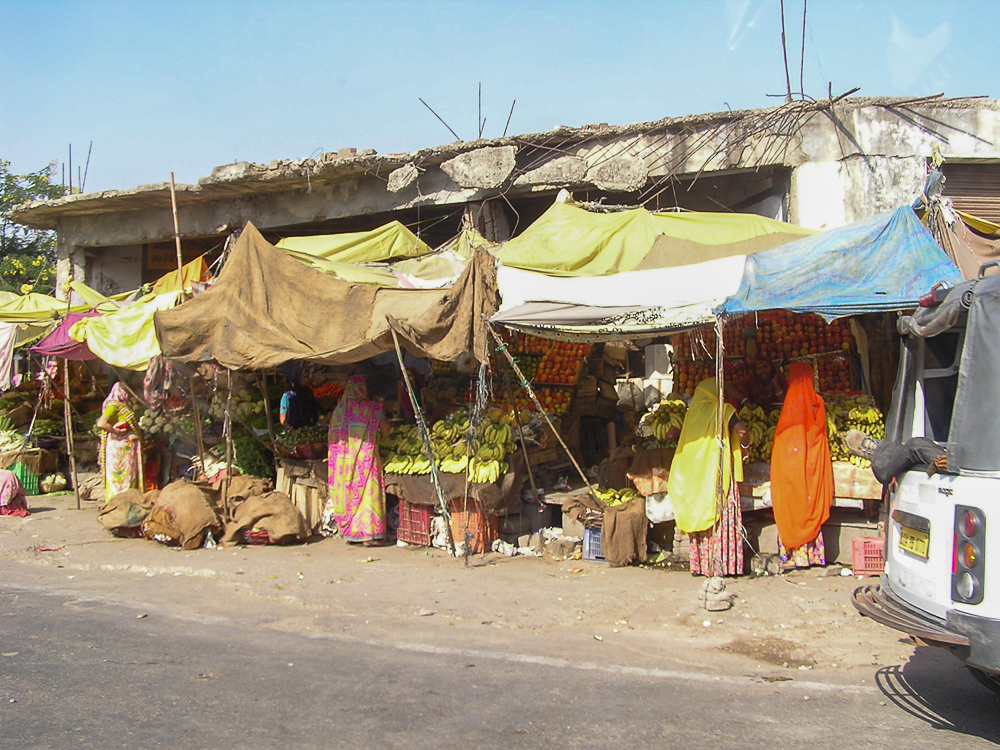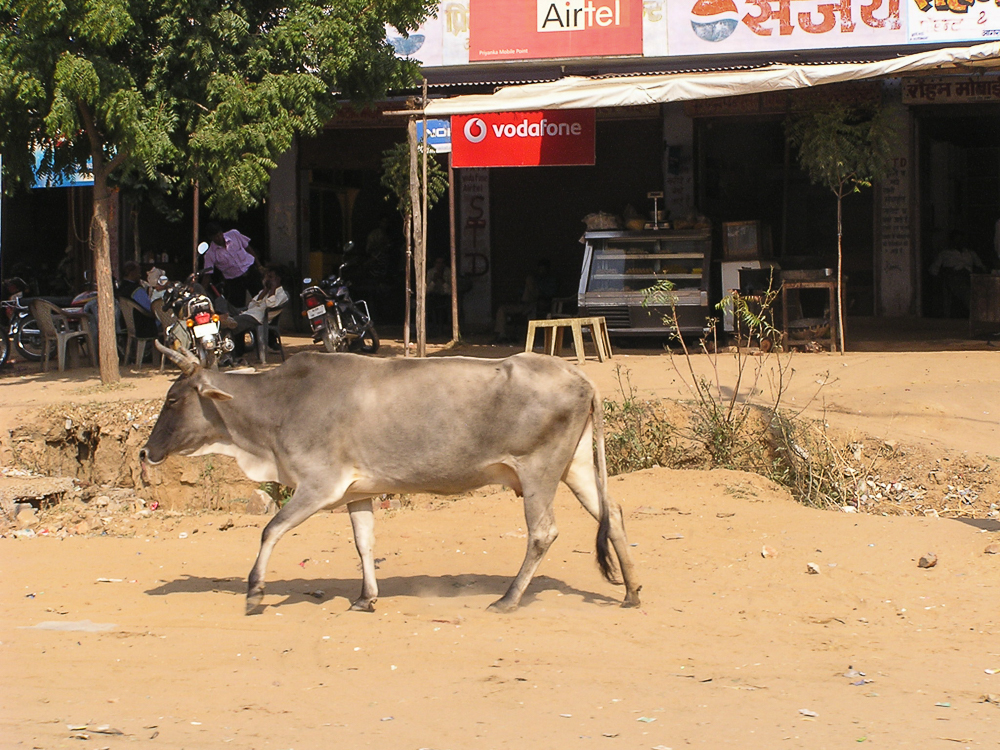Aldous Huxley wrote of Rajastan “The long days of traveling thru Rajputana seemed to me, as I sat entranced at the window, at once short and eternal…Innumerable separate images, seen during hours of contemplation, have blended and run together in my mind to for a single unit of memory…shutting my eyes I can revisualize the progressive changes in colour across the breadth of Rajputana.” Amen fellow traveler. Amen.

There is an ancient, Biblical scene around every corner. So herewith my snippets of color which together might paint a larger canvas.
Take a gate built to fit a maharajah’s carriage – maybe 1 garage door wide. Now add, in no particular order, 2-way traffic, pedestrians, roaming cows and goats, pedaled carts, 3-wheeled taxis, personal cars and vegetable wagons…. and stir. And watch in utter amazement as no one is injured and everyone nudges and coaxes their way to the other side. Repeat.
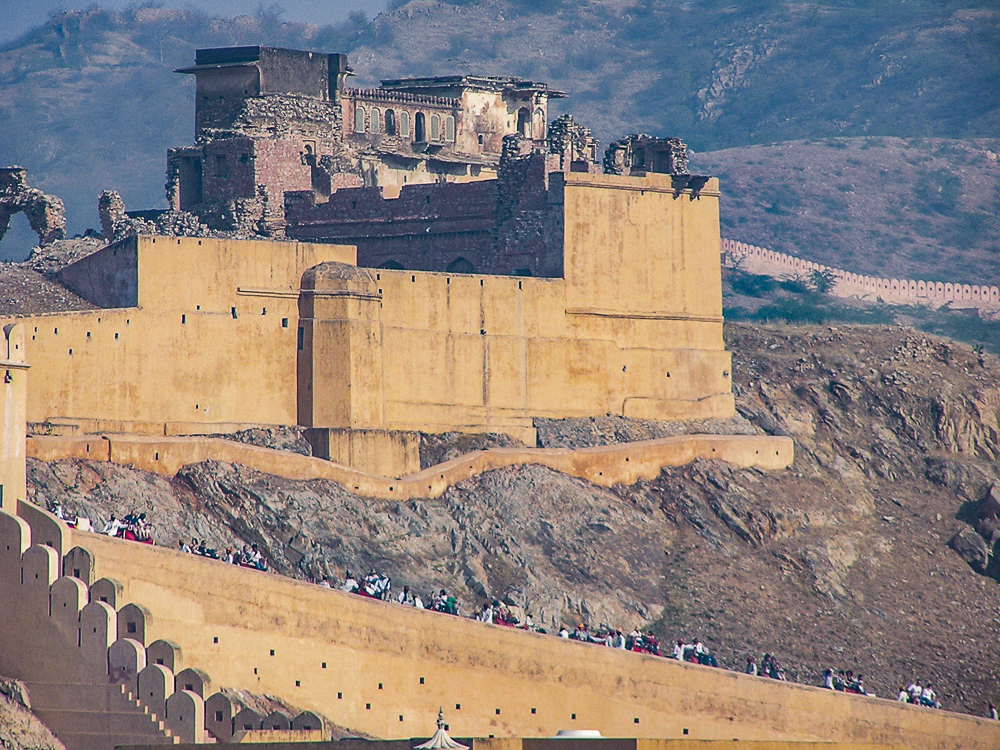
The Amber Fort with elephant parade in the foreground 
Jag Mandir Observatory, Jaipur
We journeyed from our hotel in Jaipur past the Amber Fort with row after row of elephants trudging their valuable firengi (visitor) loads up the steep hill and continued into the pink city for a brief visit to the 17thc observatory of a famous Raja. He built huge oversized instruments to prove or disprove many treatise of astronomy and was renown for his observations. I could have skipped it, but my mathematically-obsessed companion was delighted to show all the intricacies.
Then we began our long day driving thru mostly agricultural vistas toward Agra. The nuts and bolts were photographically challenging but a pleasant diversion – trying to capture “progressive changes in colour” at 60 kmph and bumpy roads while taking a peripheral view to avoid window reflections. Plus, my companion took the opportunity to request how-to advice and we amused ourselves shooting camels and haystacks as we passed. It was good practice with periodic rewards,
We passed small villages of insane cross traffic congestion, the obligatory herds of cows or goats in the road, rape and sorghum and groundnut being planted as second crops since the wheat and corn were being harvested, marigold fields for their “blessed” garlands although the plants were like azalea bushes in size and shape with ping pong ball-sized blossoms, carts being pushed pedaled and pulled by camels loaded with everything under the sun.
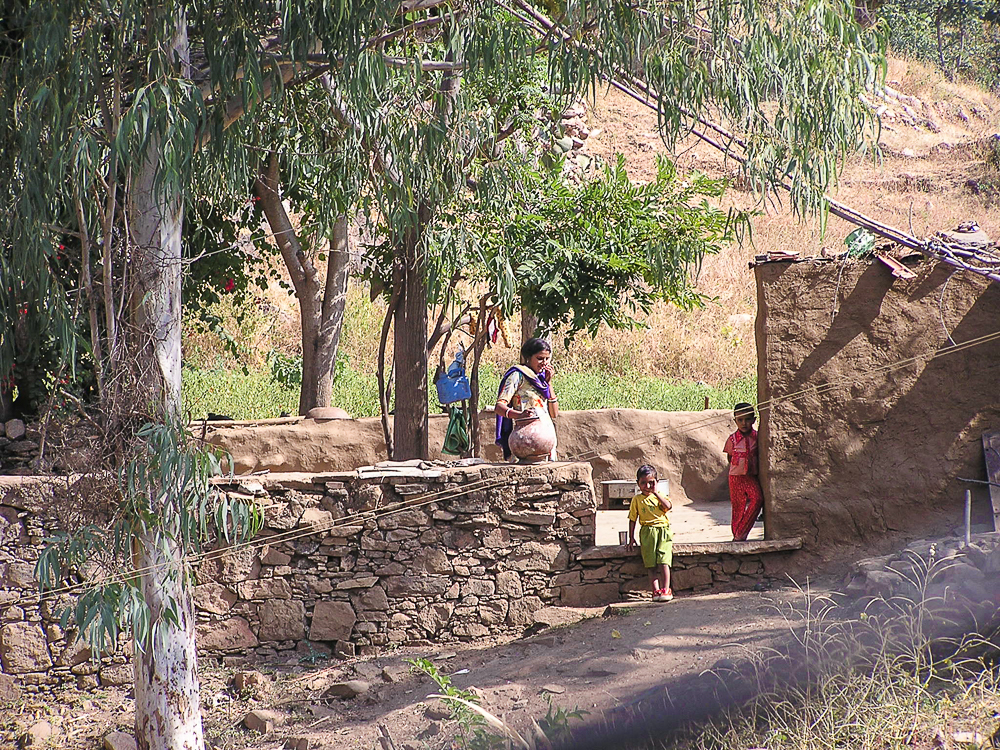
And many places were bringing in the sheaves. I could HEAR the song as we passed. Almost everything was done by hand. This was clearly work. But these families had space and air – their homes looked huge compared to city living: a courtyard with animal stalls on one side and mud or brick cabin-like homes on the other. I was reminded of the Little House TV show for size and layout.
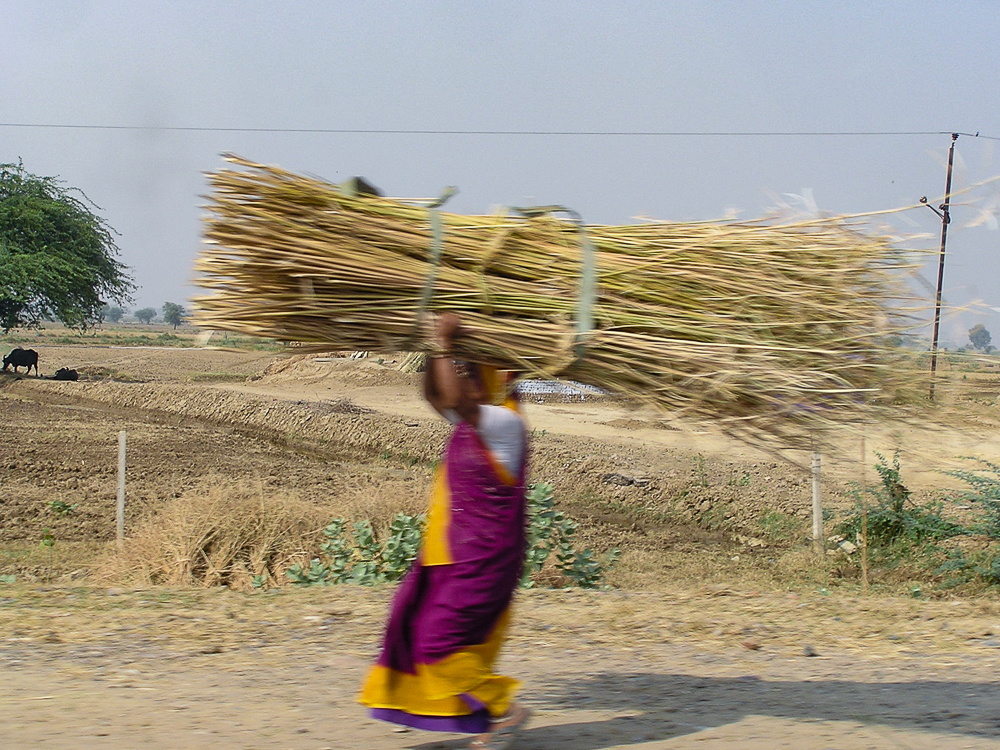
And throughout, the brilliant flashes of saris illuminating the desert boredom. If the landscape looked like west Texas, the vibrant women of Rajastan positively glow with their proud postures and flowing scarves. A family threshing wheat by hand in the field would be unnoticed if not for the flash of lime or magenta or goldenrod. A simple lane leading to a mud hut became enlivened by a glint of reflection off the mirrored trim of a purple attired woman with a half cord of wood balanced on her head and holding a small child’s hand as she walked. Or a biblical scene of wheat piled in the field is suddenly alive when a flowing blue scarf zips by on the back of a motorcycle headed into the horizon to points unknown. Mesmerizing.
It was, indeed, “at once short and eternal”.
If you’d like to know more about India or just connect with questions, check us out at www.facebook.com/SueHendersonPhotography/. We’re always interested in your comments and sharing what we’ve learned along the roads of life.

